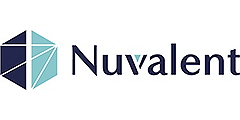- Investment Director
Skip to main content
- Funds
- Insights
- Capabilities
- About Us
- My Account
The views expressed are those of the authors at the time of writing. Other teams may hold different views and make different investment decisions. The value of your investment may become worth more or less than at the time of original investment. While any third-party data used is considered reliable, its accuracy is not guaranteed. For professional, institutional, or accredited investors only.
“How did you go bankrupt?” Bill asked. “Two ways,” Mike said. “Gradually and then suddenly.”
– Ernest Hemingway, The Sun Also Rises
Following a decade of low interest rates, which accelerated deals in the venture ecosystem and increased their size, we believe a new “higher-for-longer” rate environment will create challenges for venture-backed businesses in many sectors. While this dynamic will take time to play out, companies that prove unable or unwilling to adapt to the new normal may see cash runways dwindle, then end abruptly.
One lesson that has emerged in the wake of this shift is the importance of investing in businesses with strong, durable fundamentals, particularly capital efficiency. Capital-efficient companies generally demonstrate a path to lasting profitability and sustainable growth, with relative immunity to macroeconomic headwinds. In this article, we investigate the impact of interest rates on venture capital activity — including the ability of companies to reach “unicorn” status, discuss the key metrics for analyzing capital efficiency in late-stage venture capital companies, and posit what may lie ahead for participants across the venture capital ecosystem.
When the term unicorn was first coined in 2013, there were roughly 40 companies elevated to this rarefied status. While the definition of unicorn varies, PitchBook describes it as: “a venture-backed company that raised a round at post-money valuation of US$1 billion or more.”1 Over the next 10 years, the number of unicorns has grown exponentially to more than 700 US companies, almost 50% of which reached the threshold during the height of VC investments in 2021 (Figure 1).
So, what happened? The low interest-rate environment catalyzed a significant and rapid expansion in the number of venture fund managers and corresponding higher levels of capital deployment, which, together, increased demand shocks across the venture financing landscape. Graduation rates (the pace at which companies progress from one stage of financing to the next) rose across the board, and deals closed in progressively shorter periods, often under 12 months. Thresholds for a company’s size, scale, and profitability relaxed, while valuations skyrocketed. In the SaaS sector, companies were often valued at higher multiples if they were burning capital, as opposed to accumulating it. In short, everyone was making a tremendous amount of money until 2022, when suddenly, they were not (Figure 2).
Today, more than 90% of unicorns enjoy that status on paper only, as they have yet to raise capital in the current environment.2 We believe many will struggle to raise financing rounds based on their highwater valuation during the zero-interest-rate period, and new start-ups will find it increasingly difficult to raise successive rounds. According to some estimates, 40% of these active unicorns are trading below US$1 billion on the secondary market.3
This changing landscape provides an opportunity to reflect on which metrics are reliable indicators of a company’s long-term success, regardless of the macroeconomic backdrop. If the valuation of many active unicorns is questionable, how can investors determine which to support and how to price them?
We previously discussed venture capital growth efficiency metrics focused on early-stage companies. Here, we will focus our discussion on late-stage company metrics that can help investors assess a company’s capital efficiency (and therefore, likely durability). It is important to review a variety of metrics, stress test assumptions, and consider return-scenario implications as a company continues to grow and scale. In our view, key metrics include:
Total Addressable Market (TAM)
TAM represents the revenue opportunity or maximum market demand for a product or service. Understanding TAM helps start-ups and investors gauge the potential scale and growth prospects in a given market.
Customer Acquisition Cost (CAC)
CAC measures the amount of money a company spends to acquire each new customer. It is calculated by dividing total marketing and sales expenses by the number of customers added in a given period. CAC is an indicator of the efficiency and profitability of a company’s customer acquisition efforts.
Churn
Churn measures the rate at which customers stop doing business with a company. High churn rates can indicate dissatisfaction with a product or service, ineffective customer retention strategies, a highly competitive market, or a combination of all three.
Customer Lifetime Value (LTV)/CAC
LTV, or average total per-customer revenue, divided by CAC measures the profitability and efficiency of a company’s marketing and sales efforts. A higher LTV/CAC ratio can mean that the company is more capital efficient; able to retain customers longer; and earn more revenue from them, while spending less on acquiring new customers.
These metrics can vary by a company’s stage, sector, and operating region, so it is important to benchmark across competitors and public-market incumbents.
As the cost of capital rises — a function of both interest rates and reduced venture fundraising — it seems likely that companies will be increasingly scrutinized for capital efficiency. Such a rationalization is already in motion, with heavily funded firms such as Convoy and Hopin going under,4 and we believe these large-scale failures may continue over the next few years, as cash runways dwindle.
Portfolio companies are not the only ones that need to defend their capital efficiency. With distributions from venture capital funds dropping 84% from 2021 to 2023,5 many limited partners are asking venture fund managers difficult questions about their process, philosophy, and largely unrealized performance over the past decade. That is likely because, despite a decade of robust activity, punctuated by a tremendous liquidity environment in 2020 and 2021, most venture fund managers have returned very little capital to their investors. As an example, considering standard 10-year fund terms, 2014 vintage funds were optimally timed to take advantage of the market environment, particularly in 2021. Yet, the Cambridge Associates Venture Capital Benchmark shows a median Total Value to Paid-In (TVPI) for 2014 of 2.5x, with only 0.9x Distributed to Paid-In (DPI) returned to investors (Figure 3). The figures for the 2017 cohort are even more stark, with a median TVPI of 2.0x and a DPI of only 0.1x.
Despite ongoing headwinds, we are optimistic about the future of venture capital. Rates have been above their lows for more than two years, and in that short window, companies and investors have already begun laying the foundation for durability. We remain in a period of extraordinary innovation, with exciting, disruptive companies emerging across almost every sector. These businesses will likely need funding from private markets to continue to grow.
While the unprecedented amount of money flowing through the venture capital ecosystem over the last decade tended to prioritize “growth at all costs,” we expect companies with a foundation of strong business fundamentals, including capital efficiency, to thrive regardless of macroeconomic conditions. As a result, we anticipate that, while new unicorns will still be created, this will happen at a more reasonable pace. That setup might make the next several years an excellent opportunity for venture investors to deploy capital. After all, just as failure can occur gradually then suddenly; success can happen much the same way.
1“Post-money” refers to a company’s value after raising capital in a financing round. | PitchBook Data, Inc. no longer considers the company a unicorn if it loses venture backing because it goes public or is acquired, or if its valuation falls below the US$1 billion threshold; for example, because it went out of business or had a down round. | 2Rosie Bradbury, “Despite AI boost, unicorn creation hits 6-year low,” PitchBook Data, Inc., 17 January 2024. | 3Ibid. | 4Spencer Soper, et al., “Bezos-backed Convoy, once valued at $3.8B, shuts down,” Fortune, 19 October 2023; Ingrid Lunden, “Hopin, the struggling virtual conference unicorn, sells events and engagement units to RingCentral,” TechCrunch, 2 August 2023. | 5“2024 US Venture Capital Outlook,” PitchBook Data, Inc., December 2023. Distributions from US VC funds aged five- to 10-years old, from 30 September 2021 to 30 September 2023.
Experts


When will capital come back to private equity?
Continue readingPrivate investing portfolio company interview with RayzeBio CEO Ken Song
Continue readingPrivate biotech market: Innovation, valuations, and capital efficiency
Continue readingURL References
Related Insights
Stay up to date with the latest market insights and our point of view.

When will capital come back to private equity?
Head of Multi-Asset Strategy Adam Berger and Head of Late-Stage Growth Matt Witheiler consider the state of the private equity market, including liquidity challenges, the effects of higher interest rates, late-stage opportunities, and the impact of AI.

Private equity deep dive
We explore four key private equity questions to help investors better understand how these strategies compare and complement each other in a portfolio. In particular, we highlight the distinct opportunity sets, risk-return characteristics, and portfolio roles of venture capital and buyout strategies.

8 emerging venture capital trends
We share eight of the themes driving venture capital markets in 2024, including capital efficiency, DPI, the IPO market recovery, and much more.

Private investing portfolio company interview with RayzeBio CEO Ken Song
Dr. Ken Song, President and CEO of RayzeBio, discusses the company’s innovative approach to radiopharmaceuticals and highlights how Wellington’s public and private investment expertise is distinctive in the health care space.

WellSaid: Partnering with portfolio companies
Co-head of private investing Michael Carmen explores how we partner with portfolio companies to help them along the "last mile from the private market to the public market" including on key ESG issues for private companies to consider.

Private biotech market: Innovation, valuations, and capital efficiency
Co-heads of biotech private investments I-hung Shih and Nilesh Kumar join host Thomas Mucha to explore today's private biotech market, highlighting the state of deal flow, valuations, and innovation.
URL References
Related Insights


Abnormal Security
The Abnormal Behavior Platform uses superhuman understanding of human behavior to protect against phishing, social engineering, and account takeovers.


Accrue
Accrue was a developer of a pricing optimization tool intended to help technology companies increase profit through improved monetization by offering monetization experiments, real-time insights, clear impact and return on investment.


Acrivon Therapeutics
Acrivon Therapeutics Inc is a clinical-stage biopharmaceutical company developing oncology medicines that the Company matches to patients whose tumors are predicted to be sensitive to each specific medicine by utilizing its proteomics-based patient responder identification platform.



Affinavix
Affinivax was aqcuired by GSK in August 2022. Pioneering the development of a novel class of vaccines, the most advanced of which are next-generation pneumococcal vaccines.


Affirm
Affirm is a smarter way to pay overtime. Shop pretty much anywhere and pay at your own pace without any fees.


Agilon Health
Transforming health care for seniors by empowering primary-care physicians to focus on the entire health of their patients.


AIN Ventures
A pre-seed and seed- stage focused venture firm that invests in dual-use technology and veteran-led startups.


Airbnb
An online marketplace that connects people who want to rent out their homes with people who are looking for accommodations in specific locales.


Aligos Therapeutics
Developing targeted therapies for NASH and Viral Diseases to address important unmet medical needs.


Alkeus Pharmaceuticals
Founded in 2021 and headquartered in Cambridge, MA, Alkeus Pharmaceuticals is a clinical stage, single asset company developing ALK-001 for the treatment of Stargardt’s disease.
Allena Pharmaceuticals
A biopharmaceutical company that deployed novel oral biological platform for difficult-to-treat metabolic diseases.


AMP Robotics
Founded in 2015 and headquartered in Louisville, CO. AMP Robotics offers recycling solutions pairing AI with innovative robotic technology to drive higher recycling levels while also solving critical pain points around labor shortages, processing costs, and global sustainability goals.


Anchorage Digital
A digital asset platform and infrastructure provider that deals in the holding, investing, and infrastructure for cryptocurrency and cryptocurrency products.


Apogee Therapeutics
Founded in 2022 and headquartered in Philadelphia, PA, Apogee Therapeutics is a biotechnology company focused on engineering therapies for atopic dermatitis (AD), by developing best-in-class longer half-life antibodies against clinically de-risked targets.


Arcadia
Arcadia is a climate crisis-fighting tech company unlocking access to data and clean energy sources.


Arcus Biosciences
A rapidly growing, clinical-stage, global biopharmaceutical company developing differentiated molecules and combination medicines that may have the potential to help people with cancer live longer.


Artiva
Advancing a pipeline of off-the-shelf, allogeneic natural killer (NK) cell therapies for the treatment of hematologic malignancies or solid tumors.


Asher Biotherapeutics
Asher Bio is a biotechnology company developing precisely targeted immunotherapies for cancer and other diseases.


AssetWatch
AssetWatch is a leading provider of predictive maintenance solutions for manufacturers, which uses proprietary sensors and software / AI to proactively manage machine health and help prevent unplanned downtime while delivering meaningful energy efficiency benefits.


Atsena Therapeutics
Atsena Therapeutics is a clinical-stage gene therapy company focused on bringing the life-changing power of genetic medicine to reverse or prevent blindness.


Atreca
A biopharmaceutical company that developed novel therapeutics based on a deep understanding of the human immune response.


Attentive
A company designed to power the future of how brands scale experiences through personalized text messages.


Auris Health
Auris Health was acquired by Johnson & Johnson in February 2019. The Company is global leader in MedTech In collaboration with clinicians and healthcare experts around the world, Auris Health innovative surgical technologies and solutions to help address some of the most pressing health challenges of our time, such as metabolic disease, cardiovascular disease and cancer.


Automattic
Automattic is a distributed company and are the people behind WordPress.com, WooCommerce, Jetpack, WordPress VIP, Simplenote, Longreads, The Atavist, WPScan, Akismet, Gravatar, Crowdsignal, Clouded, Tumblr, Day One, Pocket Casts, and more.


Avalyn Pharma
Avalyn is a clinical-stage biopharmaceutical company that develops inhaled therapies for rare respiratory diseases. Avalyn's therapies treat conditions like Idiopathic Pulmonary Fibrosis (IPF) and other Interstitial Lung Diseases (ILD).


Away
Away is a modern lifestyle brand creating thoughtful products designed to transform travel.


Beta Bionics
Beta Bionics is a medical device company commercializing the iLet Bionic Pancreas, a closed -loop automated inulin delivery system for diabetes patients.


BetterUp
BetterUp helps employees at an organization succeed at their job, benefitting both the employee as well the achieve their career goals. BetterUp uses data points to match the employee with a coach best suited to assist.


Binkey
Founded in 2022 and headquartered in Washington, DC, Binkey is on a mission to empower American families with tools to use and manage their FSA dollars to save money and live healthier lives.


Birst
Infor, formerly Birst, is a global leader in business cloud software products for companies in industry specific markets. Infor builds complete industry suites in the cloud and efficiently deploys technology that puts the user experience first, leverages data science, and integrates easily into existing systems.


Black Diamond Therapeutics
Pioneering the development of novel master key therapies for patients with genetically defined cancers.


Blueprint Medicines
Blueprint Medicines is a global precision therapy company that invents life-changing medicines for people with cancer and blood disorders. Applying an approach that is both precise and agile, they create medicines that selectively target genetic drivers, with the goal of staying one step ahead across stages of disease.


BlueJay Therapeutics
BlueJay Therapeutics is discovering life-changing medicines and cures for people with viral and liver diseases, starting with chronic hepatitis B (CHB) and chronic hepatitis D (CHD).


Boundless Bio
Biopharma company interrogating extrachromosomal DNA (ecDNA) biology to deliver transformative therapies to patients with oncogene amplified cancers.


Braeburn
Braeburn is dedicated to delivering solutions for people living with the serious consequences of opioid use disorder (OUD). At Braeburn, they challenge the status quo and champion transformation of the management of opioid use disorder by partnering with the community to create a world where every person with OUD gets the best possible care and opportunity to reach their full potential.


BridgeBio Oncology Therapeutics
BridgeBio Oncology Therapeutics (Formally known as: TheRas) is a clinical stage company pursuing a clinical development strategy developing small molecule inhibitors for solid tumor indications.


Caraway Health
Founded in 2022 and headquartered in New York, NY, Caraway Health offered personalized, evidence-based care 24/7. Lori Evans Bernstein, co-founder and CEO, was creating a revolutionary platform that provides trusted, holistic and compassionate healthcare so women+ can get the care they need when they need it.


Cargo Therapeutics
Founded in 2021 and headquartered in San Mateo, CA, Cargo Therapeutics is a clinical stage cell therapy company developing an autologous CD22 targeted CAR-T product for large B cell lymphomas.


Cayaba Care
A company focused on creating a new standard for healthcare for Black communities offering homecare support through pregnancy, birth, and postpartum.


Centessa Pharmaceuticals
Centessa Pharmaceuticals is a clinical-stage pharmaceutical company with a Research & Development innovation engine that aims to discover, develop and ultimately deliver impactful medicines to patients. Their programs span discovery-stage to late-stage development and cover a range of high-value indications in rare diseases and immuno-oncology.


Chingona Ventures
Chingona Ventures is a venture capital fund that seeks to invest in pre-seed, seed, and early-stage technology and technology-enabled private companies, focusing specifically on technology, female technology, food technology, health/wellness, and future of learning.


Chroma Medicine
Pioneering a new class of single-dose genomic medicines that harness epigenetics, nature’s innate mechanism for gene regulation, to revolutionize treatment of disease.


CityBlock Health
Cityblock was founded in 2017 as the first tech-driven provider for communities with complex needs. They deliver better care to where it’s needed most, investing upstream in highly personalized, prevention-oriented health and social care to ultimately drive down costs and improve outcomes. Their tech enables scale by bringing together practical information, coordination, and communication for their members and their care teams.
Clerkie
Founded in 2017 and headquartered in San Francisco, Clerkie is a developer of a debt automation platform partnering with users to help ease their debt burden using conversational AI to build in-depth financial knowledge graphs, combined with expert financial advice to manage loan losses and making it easy for users to take action.


CodeSee
CodeSee was acquired by GitKraken in May 2024. The platform helps developers to visually understand how large scale codebase works, document it, and collaborate continuously.


Coinbase
Coinbase is a cryptocurrency exchange platform that offers a way to access the broader crypto economy.


Compass
Compass is building the first modern real estate platform, pairing the industry’s top talent with technology to make the search and sell experience intelligent and seamless.


Coupang
Powered by an outstanding end-to-end retail and logistics network and a culture of customer centricity, Coupang has broken tradeoffs around speed, selection, and price. Today, they provide exceedingly fast shipping speeds on millions of items including fresh groceries, delivered within hours nationwide, 365 days a year. They are doing this for millions of consumers in Korea, one of the largest and fastest growing retail opportunities anywhere in the world.


Covetrus (Direct Vet Marketing)
Covetrus is dedicated to advancing the world of veterinary medicine and empowering veterinary healthcare teams across the companion, equine, and large-animal health markets.


Crisp
The Crisp platform integrates data across your clouds and on-premises systems to transform it into clean, organized data ready for database storage, modeling, and reporting.


CRISPR Therapeutics
At CRISPR Therapeutics, they are focused on developing transformative gene-based medicines for serious human diseases. They are rapidly translating their specific, efficient and versatile CRISPR/Cas9 gene-editing platform into therapies to treat hemoglobinopathies, cancer, diabetes and other diseases. Their multi-disciplinary team of world-class researchers and drug developers works every day to translate their CRISPR/Cas9 technology into breakthrough human therapeutics. They are advancing a variety of programs across their four core franchises: hemoglobinopathies, immuno-oncology, regenerative medicine, and in vivo.


CytomX Therapeutics
CytomX is a leading clinical-stage biopharmaceutical company in the growing field of conditional activation with a team that is dedicated to pioneering bold science to make a difference. CytomX has multiple Probody® therapeutics in the clinic and in earlier phases of preclinical research. Their goal is to reinvent biologic therapeutics to destroy cancer, differently.


Databricks
Databricks is a cloud infrastructure company democratizing data and AI that takes a unique approach by combining rapid data collection with low cost and high-performance data retrieval.


Dataiku
Founded in 2013 and headquartered in New York, NY, Dataiku is an all-in-one data science and machine-learning platform for the design, deployment, and management of AI applications that move businesses along their data journey from analytics at scale to enterprise AI.


Defy Media
Defy Media was an American digital media company that produced original online content for the 12–34 age group.


Design Therapeutics
Design Therapeutics is pioneering novel small-molecule therapeutic candidates, called GeneTAC™ molecules (Gene Targeted Chimera), that are designed to be disease-modifying and target the underlying cause of inherited nucleotide repeat expansion diseases. Their GeneTAC™ molecules are designed to selectively bind to genetic repeat sequences, modulate gene expression either by restoring or blocking transcription, and restore cellular health.


DraftKings
DraftKings is a digital sports entertainment and gaming company that offers daily fantasy sports, sports betting, and online casino products. Users can enter daily and weekly fantasy sports contests and win money based on individual player performances in five major American sports.


Dyne Therapeutics
Dyne was founded with a singular focus: to deliver life-transforming therapies for people living with serious muscle diseases. They are utilizing their proprietary FORCE™ platform to overcome limitations of muscle tissue delivery and advance modern oligonucleotide therapeutic candidates.


Eden Labs
Enterprise data is siloed and trapped in backend systems that keep critical insights out of reach. Eden breaks down silos by unifying fragmented enterprise data for real-time apps—securely, consistently, effortlessly.


Edgewise Therapeutics
Edgewise Therapeutics is a clinical-stage biopharmaceutical company focused on the discovery, development and commercialization of innovative treatments for severe, rare muscle disorders for which there is significant unmet medical need.


Element Biosciences
Element Biosciences is developing disruptive DNA sequencing and multi-omics technology for research markets. By innovating on every fundamental element of a sequencing system, the Company seeks to lower costs, improve quality, and enhance user experience. Their initial product, “AVITI”, is a mid-throughput short-read instrument sold primarily to academic and biotech labs that generates revenue through instrument placements, consumables, and service contracts.


Entrada Therapeutics
Entrada Therapeutics is biopharmaceutical company innovating to transform the treatment of devastating diseases through intracellular therapeutics.


Escape Bio
ESCAPE Bio was a preclinical stage biopharmaceutical company focused on the discovery and development of therapies to treat genetically defined, neurodegenerative diseases.


ezCater
ezCater provides corporate catering services. The Company offers an online catering marketplace that allows businesses and individuals to order food from local caterers, as well as enables companies to track, quantify, and centralize food spend.


Faire
Faire was created with a simple vision: to help small businesses come together to compete on a more level playing field with the likes of Walmart and Amazon. Today, Faire is the online marketplace where retailers discover their next bestsellers from independent brands across the globe.


FalconX
For open, permission-less, and truly global digital assets to be adopted by mainstream institutions at scale, today's digital infrastructure is grossly inadequate. FalconX's mission is to build this connective tissue. Their technology will provide the infrastructure for the future of digital assets and enable seamless price discovery, trade execution, and transfer of value.


Fearless Fund
Fearless Fund is an early-stage venture capital fund that invests in women of color led businesses seeking pre-seed, seed level, or Series A financing. Their mission is to bridge the gap in venture capital funding for women of color founders building scalable, growth aggressive companies.


Flavrs
Founded in 2020 and is headquartered in San Francisco, CA. Flavrs is a shoppable platform which leverages video content from professional and home chefs/food creatives and allows consumers to seamlessly shop recipes with the ability to add ingredients directly to their Instacart, moving from content to commerce in one click.


Flex
Flex manages every transaction, from business revenue to your personal spend, so you can optimize your whole life in one seamless platform. The first 3-in1 business credit car.


Finvero
Finvero is a credit management platform for the next generation of financial services in Latin America. They provide personalized financing solutions from a single platform to enhance your business, physical or online stores.


Fore Biotherapeutics
Fore Biotherapeutics aims to provide rapid and high quality access to the right medicines for the right patients with the hardest-to-treat cancers. They are creating a pipeline of precision oncology treatments aimed at patients with unaddressed mutations across well-established oncology targets.


ForeScout Technologies
Forescout Technologies, Inc., a global cybersecurity leader, continuously identifies, protects and helps ensure the compliance of all managed and unmanaged cyber assets – IT, IoT, IoMT and OT. The Forescout Platform delivers comprehensive capabilities for network security, risk and exposure management, and extended detection and response enabling customers to more effectively manage cyber risk and mitigate threats.


Forma Therapeutics
Forma Therapeutics was acquired by Novo Nordisk in October 2022. The company translates unmet medical needs of people living with a serious chronic disease into innovative medicines and delivery systems, like their insulin pens. Their treatments today are benefiting millions of people living with diabetes, obesity, and rare blood and endocrine diseases.


Forty Seven
Forty Seven was aquired by Gilead in March 2020. The Company is a clinical-stage immuno-oncology company focused on developing novel checkpoint therapies to activate macrophages in the fight against cancer. Forty Seven focus its efforts on targeting the CD47 pathway as a way to engage macrophages in fighting tumors.


Freeline Therapeutics
Freeline is a clinical-stage biotechnology company developing transformative adeno-associated virus (AAV)-vector-mediated systemic gene therapies. They are dedicated to improving patient lives through innovative, one-time treatments They use their proprietary, rationally designed AAV vector and capsid (AAVS3), along with novel promoters and transgenes, to deliver a functional copy of a therapeutic gene into human liver cells to express a persistent functional level of the missing or dysfunctional protein into the patient’s bloodstream. They are advancing a clinical program in Gaucher disease and early-stage efforts in various targets.


Fuze
Fuze provided voice-over Internet protocol telecommunication services and other cloud-based solutions in the United States and internationally. The company offered unified communication solutions that provide voice, video, text, presence, messaging, and collaboration services from a single source through the cloud and enterprise mobility solutions.


Generation Bio
Generation Bio is innovating genetic medicines to provide durable, redosable treatments for people living with rare and prevalent diseases.


Glean
Glean is an AI-powered enterprise search platform and knowledge assistant that uses more than 100 API integrations. Its platform streamlines access to internal company information across disparate data sources, documents, and applications in one centralized platform.


Global Blood Therapeutics
Global Blood Therapeutics was acquired by Pfizer in October 2022. They are a biopharmaceutical company dedicated to the discovery, development and delivery of life-changing treatments that provide hope to underserved patient communities starting with sickle cell disease (SCD).


Go Digit General Insurance Ltd
Go Digit General Insurance Limited is a digital insurance company. The Company enables consumers to buy vehicle, travel, property, flight delay, health, mobile, holiday home, and shop insurance.


Goldfinch Bio
Goldfinch was a clinical-stage biotech company focused on discovering and developing precision therapies for patients with kidney disease.


Gracell Biotechnologies
Gracell Biotechnologies is a global clinical-stage biopharmaceutical company dedicated to discovering and developing innovative and highly efficacious cell therapy. Leveraging its pioneering FasTCAR and TruUCAR technology platforms, Gracell is developing a rich clinical-stage pipeline of multiple autologous and allogeneic product candidates to overcome major industry challenges that persist with conventional CAR-T therapies.


GrayMatter Robotics
GrayMatter Robotics develops advanced robotic solutions powered by proprietary GMR-AI™ technology. The company provides robotic cells designed for ease of deployment and reliability, supporting manufacturing operations by improving speed, consistency, and quality compared to traditional manual processes.


Greenlight
Greenlight, is an all-in-one money management platform purpose-built for families, complete with a debit card for kids and teens, cash back credit card for parents and companion app.


Guild Education Inc.
The Guild Career Opportunity Platform™ was built to help millions of Americans gain the skills and support they need to grow in their careers. As a public benefit corporation, they align the needs of companies, learning partners, and employees through a business model where they do well by doing good.


Harry's
Harry’s manufactures and sells shaving equipment and men's personal care products via online and retail channels.
Heartflow
HeartFlow’s non-invasive personalized cardiac test provides unprecedented visualization of each patient’s coronary arteries, enabling physicians to create more effective treatment plans for their patients.


Helicore
Helicore focuses on the discovery and development of novel and differentiated therapies for obesity.


Houzz
Houzz is website, online community and software for architecture; interior design and decorating; landscape design and home improvement.


Hummingbirds
Hummingbirds pairs brands with creators in specific cities to drive hyperlocal behavior by connecting with their network of local friends and followers.
IconOVir Bio
Iconovir is a preclinical-stage biotechnology company developing oncolytic virus therapy for the treatment of patients with cancer.


Impulse Dynamics
Impulse Dynamics is a medical device company offering innovative solutions for the treatment of chronic heart failure.


Instil Bio
Instil Bio, Inc is a global, clinical-stage cell therapy company developing tumor infiltrating lymphocytes (TIL) for the treatment of cancer. They are building on the decades-long foundation of TIL efficacy in treating solid tumors, applying their cell therapy experience and TIL manufacturing platform to bring the promise of TIL therapy to patients in need.


Ingressive Capital
Building trans-generational wealth across Africa through entrepreneurship and equity.


Invuity
Invuity, Inc. was acquired by Stryker in October 2018. The Company produces visualization products for surgical field applications such as soft tissue retractors, retractor systems, and lighting systems.


January Ventures
Early-stage venture capital company investing in early-stage companies who are trying to change the tech ecosystem by providing guidance, thought partnership, investment, and introductions.


Jounce Therapeutics
Jounce Therapeutics was acquired by Concentra Biosciences in May 2023. Jounce Therapeutics is a clinical-stage biopharmaceutical company that develops cancer immunotherapies. The company's goal is to transform cancer treatment by using the immune system to attack tumors.


Just Salad
Just Salad is a fast casual restaurant offering healthy, fresh, affordable, and customizable meal options including salads, wraps, smoothies, and grain bowls.


Kala Bio
Kala Bio is a clinical-stage biopharmaceutical company focused on solving rare and serious eye diseases through research and development of innovative therapies.


Kinside
Founded in 2018 and is headquartered in Pasadena, CA. They are a developer of dual-sided childcare platform designed to connect working parents with a network of daycares and preschools across the United States.


Klarna
Founded in 2005 and headquartered in Stockholm, Sweden, Klarna is a financial technology company and chartered Swedish Bank that provides payments and unsecured credit solutions for merchants and shoppers, focusing primarily on the nascent “Buy Now, Pay Later” (BNPL) market.


KYC Hospitality
KYC Hospitality is a global technology ecosystem for hotels and focuses on user-empathetic experience, superior customer service and value.


Kymera Therapeutics
Kymera Therapeutics is a clinical stage biopharmaceutical company pioneering a transformative new modality, “targeted protein degradation” (TPD), with the ability to pursue targets long considered undruggable and to treat disease in entirely new ways. Their team has developed a proprietary drug discovery engine, Pegasus, to enable the design of highly selective, small molecule protein degraders with potent activity against a broad range of disease indications.


Landmark Health
Landmark provides home-based care for individuals with multiple, chronic health conditions in order to reduce the use of hospital emergency rooms as the primary source of health care.



Lendtable
Founded in 2020 and was headquartered in San Francisco, CA. Lendtable was a financial services company that specialized in providing income-constrained individuals with wealth building cash advances to maximize their employer’s matching contribution to their retirement.


LianBio
LianBio leverages an unparalleled global innovation mining platform and a China-centric execution strategy to enable partners to access the large and dynamic healthcare landscape in China and major Asian markets while enhancing their global development initiatives.


Loula
Loula handles eligibility checks, claim submissions, and payment collections, making the process seamless for doulas.


Lumafield
Lumafield produces CT scanning technology which allows manufacturers to see 3-D X-ray images of their products for the purposes of quality assurance and new product development.



MBX Biosciences
Founded in 2019 and headquartered in Carmel, Indiana, MBX Biosciences is a biotechnology company creating therapies for rare endocrine diseases through the discovery, development, and commercialization of transformative peptide therapeutics.


Meati
Headquartered in Boulder, CO. Meati specializes in the production of fungi-based proteins that are healthier and more climate-friendly than traditional animal products. Meati is the first to market in the U.S. with a nutritious and clean-ingredient product that competes with whole-cut chicken and steak.


Meroxa
Meroxa is the industry-leading code-first stream processing application platform built for developers' everyday workflows.


Mersana Therapeutics
Mersana Therapeutics is a clinical-stage biopharmaceutical company focused on the development of novel antibody-drug conjugates (ADCs) and driven by the knowledge that patients are waiting for new treatment options.


Metsera
Metsera is a clinical-stage biotechnology company focused on engineering, developing, manufacturing, and ultimately commercializing a new generation of potent, ultra-long acting, scalable nutrient-stimulated hormone (NuSH) therapies for obesity and related diseases.


Mindset Care
Mindset Care assists those with a mental illness or physical disability, and their caregivers, in applying for Social Security Disability benefits.


Moderna, Inc.
Moderna, Inc. is a pharmaceutical and biotechnology company that focuses on RNA therapeutics, primarily mRNA vaccines. These vaccines use a copy of a molecule called messenger RNA (mRNA) to carry instructions for proteins to produce an immune response.


Movn Health
Founded in 2013 and is headquartered in Irvine, California. Moving Analytics is a developer of a virtual care management platform intended to help hospitals implement virtual cardiac rehab and other secondary prevention programs.


Musinsa
Musinsa is an online, community-driven platform for fashion products, operating as two-side marketplace that enables customers to shop various retail products and connects local and international brands with its consumers.


nCino
nCino was founded in 2011 by a team of bankers and entrepreneurs who recognized the need for a single end-to-end cloud-based solution that would improve transparency, efficiency, and profitability.


Neon Therapeutics
Neon Therapeutics was acquired by BioNTech in January 2020. The Company is a biotechnology company developing novel neoantigen-based T cell therapies. It is a subsidiary of BioNTech, a global clinical-stage biotechnology company focused on patient-specific immunotherapies for the treatment of cancer and other serious diseases.


New Age Capital Fund I, LP
New Age Capital Fund I, LP will make investments in seed and early-stage technology and technology-enabled companies founded and led by Black and Latino entrepreneurs. Their mission is to work with the best Black and Latino entrepreneurs solving real world problems.


Nightstar Therapeutics
Nightstar Therapeutics was acquired by Biogen in March 2019. Nightstar Therapeutics is a biopharmaceutical company that develops gene therapies for rare inherited retinal diseases. Their approach is to inject the retina with a viral vector that carries a healthy copy of the mutated gene responsible for the condition.


NiKang Therapeutics
NiKang Therapeutics is an early stage biotech company focused on discovering and developing innovative small molecule oncology medicines to help patients with unmet medical needs. The successful implementation of their strategy enables us to rapidly and efficiently discover and advance proprietary drug candidates with the most desirable pharmacological features into clinical studies.


Nivalis Therapeutics
Nivalis Therapeutics merged with Alpine Immune Sciences in January 2017. The Company is a clinical-stage pharmaceutical company developing a novel class of disease modifying therapies.


nLIGHT
nLIGHT is a leader in the development, design and production of innovative laser technologies and products. Their high-power semiconductor and fiber lasers are not only changing the way things are made but also changing the things that can be made.


Nurix Therapeutics
Nurix is committed to bringing novel, first-in-class therapies to patients without adequate treatment options. Their small molecule drugs are designed to modulate protein levels in cells as a new therapeutic approach for cancer. Through its leadership in Targeted Protein Modulation and its powerful proprietary DELigase platform, Nurix has attracted industry-leading partners including its current drug discovery collaborations with Sanofi and Gilead Sciences.


Nuvalent
Nuvalent combines deep expertise in structure-based design with clinical insights from physician-scientists to precisely inhibit clinically proven kinase targets and solve for the dual challenges of kinase resistance and selectivity.


Obsidian Therapeutics
Obsidian Therapeutics is using its proprietary cytoDRiVE® platform to harness the power of regulated therapeutic proteins to engineer precision medicine.


Olema Oncology is a biopharmaceutical company developing innovative targeted therapies for women's cancers.


Olist
Olist is an SMB commerce enabler ecosystem that specializes in the fields of logistics and capital.


Olo Inc
Olo was born out of a simple idea: What if you could order and pay for a coffee from your phone and have it ready upon arrival at the cafe? They remain committed to helping restaurants, convenience stores, and supermarkets scale online ordering and delivery, make data-driven business decisions, and personalize the guest experience on- and off-premise.


Omada Health
Omada aims to inspire people to make lasting health changes on their own terms. They partner with health plans and employers to equip members with personalized tools, resources, and support to improve their health one step at a time.


Orennia, Inc.
Founded in 2021 and headquartered in Calgary, Canada, Orennia is a data analytics platform that enables the build-out of renewable energy assets, accelerating the clean energy transition by providing critical project-level information and decreasing the time and cost to complete key investment analysis.


Oscar Health, Inc.
Oscar is the first health insurance company built around a full stack technology platform that provides affordable, high-quality health care.
Oxford Nanopore Technologies
Oxford Nanopore makes a novel generation of DNA/RNA sequencing technology that provides rich data, is fast, accessible and easy to use. Their goal is to disrupt the way that biological analyses are currently performed, and open up new applications that have a profound, positive impact on society.


PagerDuty
PagerDuty is transforming critical work for modern business. Their powerful and unique platform makes sure you can take the right action, when seconds matter. From developers and reliability engineers to customer success, security and the C-suite, they empower teams with the time and efficiency to build the future.


Paidy
Paidy is a digital payment and Buy-Now-Pay-Later (BNPL) provider operating exclusively in Japan. Paidy integrates paying back Paidy over time. The company’s financing products includes a 30-day single pay products and a 3-month installment product. Paidy works with some of Japan’s largest eCommerce merchants including Amazon and Apple.


Patreon
Patreon powers membership businesses for creators by giving them the tools they need to acquire, manage, and energize their paying patrons. With a subscription-style payment model, fans pay their favorite creators a monthly amount of their choice in exchange for exclusive access, extra content, or a closer look into their creative journey.


Payoneer
Payoneer is a financial technology company that enables small and medium-sized enterprises to transact and thrive.


Peloton
Peloton is an interactive fitness platform reinventing fitness with live and on-demand boutique studio classes.
PHYND
PHYD is your free Smart TV gaming experience that gives you accessibility on all devices, play and socialize across a wide variety of games.
Pinterest is a visual bookmarking tool for saving and discovering creative ideas.


PMV Pharma was founded in 2013, they have built a precision oncology platform that leverages more than four decades of research experience and unique insights into the p53 protein. Their research and development efforts are dedicated to selectively targeting mutant p53, providing unique therapies for any patient whose tumor harbors these gene mutations.


Quince
Founded in 2018 and headquartered in San Francisco, CA, Quince is a curated online retailer that sells luxury clothing, accessories, and home goods at discounted prices.


RayzeBio
RayzeBio was acquired by Bristol Myers Squibb in February 2024. Founded in 2020 and headquartered in San Diego, CA, RayzeBio is a biotechnology company focused on improving outcomes for people with cancer by harnessing the power of targeted radioisotopes to treat clinically validated solid tumor targets.


Redfin
Redfin helps people buy and sell homes in over 100 markets across the U.S. and Canada. As a residential real estate brokerage, they combine their agents and technology to create a faster, better and more affordable service.


Rhythm Pharmaceuticals
Rhythm Pharmaceuticals is a commercial-stage biopharmaceutical company committed to transforming the care for patients living with rare genetic diseases of obesity.
Rokt Pte Ltd
A mission-driven, hyper-growth community of curious explorers, intent on unleashing the potential of ecommerce.


Saluda Medical, Inc.
Founded in 2013 and headquartered in Artarmon, New South Wales, Australia, Saluda Medical is a medical device company which develops a closed-loop spinal cord stimulation system using an investigational device called Evoke; the device measures the spinal cord's response to stimulation and adjusts on every pulse to optimize activation within the patient's therapeutic window.


Satsuma Pharmaceuticals
Satsuma is a development-stage biopharmaceutical company dedicated to bringing novel treatments to people who suffer from migraine and other debilitating conditions. They focus on combining great science, cutting-edge technology and proven drug therapies to create improved therapeutic products that address the significant unmet needs of patients.


Scale
Scale provides a data-centric, end-to-end solution to manage the entire ML lifecycle. Combining cutting edge technology with operational excellence, they help teams develop the highest-quality datasets because better data leads to better AI.


Scopely
Founded in 2011, Scopely is fueled by a world-class team and a proprietary technology platform Playgami that supports an extremely diverse portfolio of experiences. With expertise in game design and development, live operations, marketing, analytics and more, their team is dedicated to empowering players to play their own way by creating deep experiences that inspire play, every day.
Scorpion Therapeutics
Scorpion Therapeutics was acquired by Lilly in January 2025. Developing the next generation of targeted cancer therapies. Their fully integrated discovery platform is built upon the most advanced technologies available for drug discovery, small molecule design, and target identification that they believe will enable us to rapidly create highly selective small molecule compounds against an unprecedented spectrum of targets.


Scribe Therapeutics
Scribe is molecular engineering the most advanced platform for CRISPR-based genetic medicine. Their integrated technologies, designed to be the best for therapeutic use, offer key advantages.


Seae Ventures
Seae Ventures I, LP seeks to invest in pre-seed, seed, or early-stage health care and/or technology companies primarily founded by women and people who identify as Black, Indigenous and People of color.


SeatGeek
Founded in 2009 and headquartered in New York, NY, SeatGeek is an operator of a mobile-focused ticket platform that enables consumers to buy and sell tickets for sports, concert, and theater events.


Select Water Solutions
At Select Water Solutions, they’re dedicated to providing customers with an arsenal of efficient and environmentally conscious water and chemical solutions to service the full life cycle of the well. Select Water Solutions is geographically positioned to provide customized solutions to the unique requirements of every major unconventional basin.


Serena Ventures
The Fund seeks to locate, analyze, and invest in start-up an early-stage companies that embrace diverse leadership, individual empowerment, creativity, and opportunity.


SiteOne Therapeutics
SiteOne is a clinical-stage company, exploring the potential of sodium channels and other genetically and clinically validated targets to treat pain and sensory hyperexcitability disorders.


SKIMS
Founded in 2019 and headquartered in Culver City, CA, Skims is a consumer product brand that offers underwear, loungewear, shapewear, swimwear, and basics, with a focus on body positivity and inclusivity.
Slack Technologies
Slack is an enterprise software platform that allows teams and businesses of all sizes to communicate effectively.



Somatus
Somatus is a healthcare company that partners with health plans, health systems, nephrology, and primary care groups.


Span IO
Span manufactures and provides a connected, software-enabled home electrical panel, the main distribution point for electrical circuits within the home, and other smart paired devices such as an EV charger.
Spotify Technology
Spotify is a commercial music streaming service that provides restricted digital content from a range of record labels and artists.
SpotOn
SpotOn is committed to supporting businesses with the software and payment solutions they need, supported by local and personal service, delivered at a fair price, and designed to help them compete and win.

Stationwise
Stationwise offers a comprehensive staffing platform designed specifically for fire departments, streamlining operations from staffing to payroll and budgeting. Stationwise simplifies complex administrative tasks, allowing firefighters to focus on their critical work.


Strata Oncology
Strata works to accelerate the impact of precision medicine for patients with cancer. They are determined to eliminate barriers that stand between patients and their optimal outcomes. They bring together leading-edge technology, real-world data and innovative clinical trials to optimize and expand the use of cancer therapies across the cancer care continuum.
Stripe
Stripe is an API technology company that provides online payment processing and commerce solutions for Internet businesses.


Swiggy
Swiggy is a food delivery platform that brings food from neighborhood restaurants directly to customers' doors.


Synthego
Synthego is a genome engineering company that enables the acceleration of life science research and development in the pursuit of improved human health. The company leverages machine learning, automation, and gene editing to build platforms for science at scale. Synthego is at the forefront of innovation enabling the next generation of medicines by delivering genome editing at an unprecedented scale.


Tabby
Tabby is a financial platform intended to provide customers a buy now pay later option. The company's platform provides consumers across the UAE and Saudi Arabia with the flexibility to pay for their online and offline purchases either in a deferred single payment or in multiple installments, enabling customers to buy items on flexible credit with safe payments.


Tanium
Tanium, the industry's first and only provider of converged endpoint management (XEM), leads the paradigm shift in endpoint management — consolidating tools, connecting workflows and bringing together people to create a convergence.


Taptap Send
Founded in 2018 and headquartered in London, England, Taptap Send is a cross-border money transfer service that facilitates cheap and fast money transfers from the UK, EU, US, UAE, and Canada to various countries in Africa, Asia, and the Caribbean.


Teya
Teya is an all-in-one solution for small and growing businesses. From payments, to loyalty, to the cash advance merchants use to give their shops that facelift – Teya has helped over 300,000 business owners to connect with the joy of running their business.
The Trade Desk
The Trade Desk is a multinational technology company that specializes in real-time programmatic marketing automation technologies, products, and services, designed to personalize digital content delivery to users.


Thoras.AI
Thoras.AI helps companies provide reliable and efficient scale to cloud computing.


Thriveworks
Thriveworks offer a variety of mental health services, including depression therapy, marriage counseling, life coaching, & more.


Trace Machina
Trace Machina builds simulation infrastructure by introducing NativeLink. NativeLink is an open-source simulation infrastructure platform, tailored to handle large objects and intricate systems across native and interpreted programming languages. The tool levels-up engineering productivity while delivering massive cost savings on compute resources.


Tricida
Tricida, Inc. was a pharmaceutical company that developed and commercialized drugs for renal, metabolic, and cardiovascular diseases. Their lead drug candidate was TRC101, an oral polymer designed to treat metabolic acidosis in patients with chronic kidney disease (CKD).


Trove
Founded in 2012 and headquartered in Brisbane, CA. Trove is the leading enterprise solution in the Recommerce space, providing major brands and retailers a comprehensive solution to offering re-sale in-house, allowing them to compete in a fast-growing resale space.


TS Conductor
TS Conductor delivers 2-3 times the capacity of traditional ACSR while eliminating the problems of first-generation advanced conductors at their source.


Uber Technologies
Uber develops, markets, and operates a ride-sharing mobile application that allows consumers to submit a trip request.


UiPath
The AI-powered UiPath Business Automation Platform combines leading robotic process automation (RPA) with a full suite of capabilities to understand, automate, and operate end-to-end processes, offering unprecedented time to value.


Cogent Biosciences
Unum Therapeutics underwent a company name change to Cogent Biosciences in October of 2020. The Company is a biopharmaceutical company focused on developing therapies for solid tumors.


UpStream Bio
Founded in 2021 and headquartered in Waltham, MA, Upstream Bio is a clinical stage company whose lead program aims to develop a monoclonal antibody to inhibit the TSLP receptor in the treatment of allergic and inflammatory diseases.


Urban Company
Urban Company is a technology platform offering a variety of services at home. Customers use their platform to book services such as beauty treatments.


VelosBio
VelosBio was acquired by Merck in November of 2020. The Company is a clinical-stage biopharmaceutical company committed to developing first-in-class cancer therapies targeting receptor tyrosine kinase-like orphan receptor 1 (ROR1).


Ventyx Biosciences
Ventyx is a clinical-stage biopharmaceutical company focused on developing innovative oral medicines for patients living with autoimmune and inflammatory disorders. They believe their ability to efficiently discover and develop differentiated drug candidates will allow us to address important unmet medical needs with novel oral therapies that shift the immunology markets from injectables to oral drugs.


At Verve, they are striving to build the preeminent company developing gene editing medicines to treat atherosclerotic cardiovascular disease (ASCVD). Their goal is to disrupt the chronic care model for treating ASCVD by providing a new therapeutic approach with single-course gene editing medicines.


Voyager Therapeutics
Voyager is leveraging its expertise in neuroscience and its pioneering discoveries in AAV capsids to advance life-changing gene therapies and other therapeutic modalities for neurological diseases.


Vuori
Vuori sells and manufactures a new perspective on athletic performance apparel that is inspired by coastal living.


WeWork
WeWork was founded in 2010 with the vision to create environments where people and companies come together and do their best work. They’re constantly reimagining how the workplace can help everyone, from freelancers to Fortune 500s, be more motivated, productive, and happy—because that’s how tomorrow works.


Westbound Equity
Westbound Equity invests financial & social capital into exceptional ventures led by underrepresented founders of color, founders addressing the needs of underrepresented consumers of color, and founders with a demonstrated commitment to creating inclusive cultures and building diverse teams.


Wish
Wish is an e-commerce shopping app, putting a digital shopping mall of affordable goods directly in the pockets of consumers worldwide.


Wiz
Wiz is the unified cloud security platform for cloud security and development teams that includes prevention, active detection and response. The self-service model was built for scale and speed of your cloud development.


Zenas BioParma
Zenas BioPharma is a global biopharmaceutical company committed to becoming a leader in the development and commercialization of immunology based therapies for patients in need.
ZipRecruiter
ZipRecruiter is an online employment marketplace, connecting millions of employers and job seekers through mobile and email services.


Zuora
Zuora is an American enterprise software company headquartered in Redwood City, California that creates and provides software for businesses to launch and manage their subscription-based services.